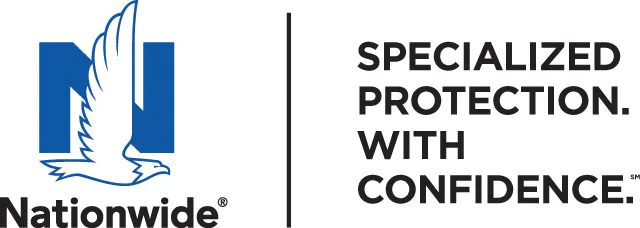Help employees stay safe during extreme heat
This summer has been one of the hottest on record, and the 2023 year is on track to be the warmest ever around the globe.1 This comes after 2022, the sixth warmest year on record.2
Extreme heat is more deadly than any other weather event,3 and work-related heat deaths happen far too often. In 2021 alone, there were 36 work-related deaths due to environmental heat exposure in the United States.4 Heat-related illness occurs when the body is not able to dissipate heat quickly enough. Internal body temperature rises, and the person may become thirsty, have cramping, or experience heat exhaustion or heat stroke.5
This can happen both indoors and outdoors; to the old and the young. Last year, a 28-year-old farm worker in Florida experienced heat illness on the job and died.6 Soon after, the Occupational Safety and Health Administration (OSHA) cited the labor contractor for exposing the worker to heat hazards.
Because the U.S. has experienced some of the highest levels of heat-related illness in recent years,7 it’s vitally important that employers manage heat-related risk — both indoors and outdoors — by including it in their safety plan to prevent work-related injuries.
Why it is important to keep employees safe
Aside from being the right thing to do, keeping employees safe is the law. Under the Occupational Safety and Health Act, employers are responsible for providing workplaces free of known safety and health hazards. According to OSHA, this includes protecting workers from heat-related hazards.
As mentioned, heat-related illnesses, like heat stroke (the most serious), heat exhaustion, rhabdomyolysis (disintegration of muscle fiber), heat syncope (fainting), heat cramps and heat rash can have multiple effects on the body.
8 steps employers should take to keep workers safe
Preventing heat-related illnesses requires thoughtful planning. See below for eight ways that can help create a safer work environment in the face of extreme heat.
- Establish an acclimatization plan. Over 70% of heat-related deaths occur during an employee’s first week on the job.8 This underscores the need to establish an acclimatization plan that allows new and returning workers to adapt to the environment. It takes some time to get used to working in extreme conditions, and the process differs for every person.
- Plan ahead. Employers should create a formal plan to prevent heat-related illness and detail the response actions to take in an emergency. This will include oversight of workers, knowing how to respond to official heat advisories and warnings, ensuring adequate first aid is available, and knowing when symptoms support a 911 call. On days when extreme heat may be present, pre-shift meetings should be held to discuss the prevention plan in detail, what heat-related illness symptoms look like, and early response procedures to prevent escalation.
- Check the weather and monitor the heat index. Weather conditions can change quickly; it’s important to continually monitor the sun, temperature, humidity and other environmental factors and change plans throughout the day based on those factors.
- Use OSHA’s heat app. The OSHA-NIOSH Heat Safety Tool9 provides safety information via mobile devices. Workers and employers can download the app and calculate the risks of certain work sites based on the heat index. They can also sign up for notifications about protective measures to take to prevent heat-related illnesses.
- Be able to recognize the symptoms of heat-related illnesses. It’s hard to treat something that hasn’t been identified. The symptoms of heat-related illness are varied but include fatigue, fainting, nausea, dizziness, thirst, rapid heart rate and more. OSHA has provided a list of heat-related illnesses and first-aid recommendations on its website.10 In addition, OSHA’s Heat Illness Prevention campaign helps employers and workers understand hazards of working in hot conditions, precautions workers can take and responsibilities of employers.
- Develop a training program. It’s the employer’s duty to create a safe working environment, but educating and training workers on the risks of extreme heat will give them the tools they need to understand and prevent it. Training resources could include printed hazard alerts and fact cards, and infographics or posters mounted on walls or handed out that outline how to stay protected from heat hazards. Sharing webinars, videos and podcasts on the topic also can help educate the employer’s team.
- Provide regular hydration opportunities and other means of combatting heat. Dehydration can occur during extreme heat events, so it’s important for employers to provide easily accessible water and offer breaks regularly. Sports drinks and other liquids with electrolytes in them can also help prevent and combat dehydration. Workers should be advised to avoid certain drinks during extreme heat, such as caffeine or sugary drinks. These beverages contribute to dehydration. Additionally, employers should have wet towels and ice available, which are effective in combatting heat stress, as well as specific areas where workers can cool down.
- Encourage workers to wear proper clothing. Lightweight, breathable materials will allow heat to escape from the body and shield workers from the sun. If an employee must wear heavy garments or other items that retain heat, they should be monitored and time spent wearing those pieces should be limited.
Workforce safeguards
In the face of record-breaking temperatures and the tragic toll of heat-related illnesses, it is imperative that employers take swift action to safeguard their workforce. By implementing comprehensive safety plans and fostering a culture of prevention, business owners can mitigate the risks of extreme heat and ensure a safer, more resilient work environment.
These resources can be shared with customers:
- Heat safety loss control article
- OSHA – Heat Illness Prevention Campaign
- OSHA-NIOSH Heat Safety Tool – A free app that offers site specific heat index information and risk assessment.
- Center for Disease Control (CDC) Topic Page on Heat Stress
- OSHA Topic Page on Heat Stress
- NIOSH – Occupational Exposure to Heat and Hot Environments
- National Integrated Heat Health Information System
For more safety resources, visit the My Loss Control Services website.
Citations/Disclaimers
-
1
USA Today “Heat record after heat record will be broken in 2023. Here’s how to make sense of it all.,” July 9, 2023.
-
2
Climate.gov “Climate Change: Global Temperature,” January 18, 2023.
-
3
NBC News “Heat kills more in U.S. each year than any other extreme weather event,” August 2, 2022.
-
4
U.S. Bureau of Labor Statistics “36 work-related deaths due to environmental heat exposure in 2021,” June 5, 2023.
-
5
Occupational Safety and Health Administration “Overview: Working in Outdoor and Indoor Heat Environments,” Accessed August 22, 2023.
-
6
U.S. Department of Labor “US Department of Labor Cites Okeechobee Labor Contractor After Heat Illness Claims the Life of 28-Year-Old Farmworker in Parkland,” June 28, 2023.
-
7
NPR “This CDC data shows where rates of heat-related illness are highest,” July 26, 2023.
-
8
Occupational Safety and Health Administration “Prevention – Protecting New Workers, Accessed August 22, 2023.
-
9
Occupational Safety and Health Administration “Heat Safety Tool,” Accessed August 22, 2023.
-
10
Occupational Safety and Health Administration “Heat-Related Illnesses and First Aid,” Accessed August 22, 2023.

